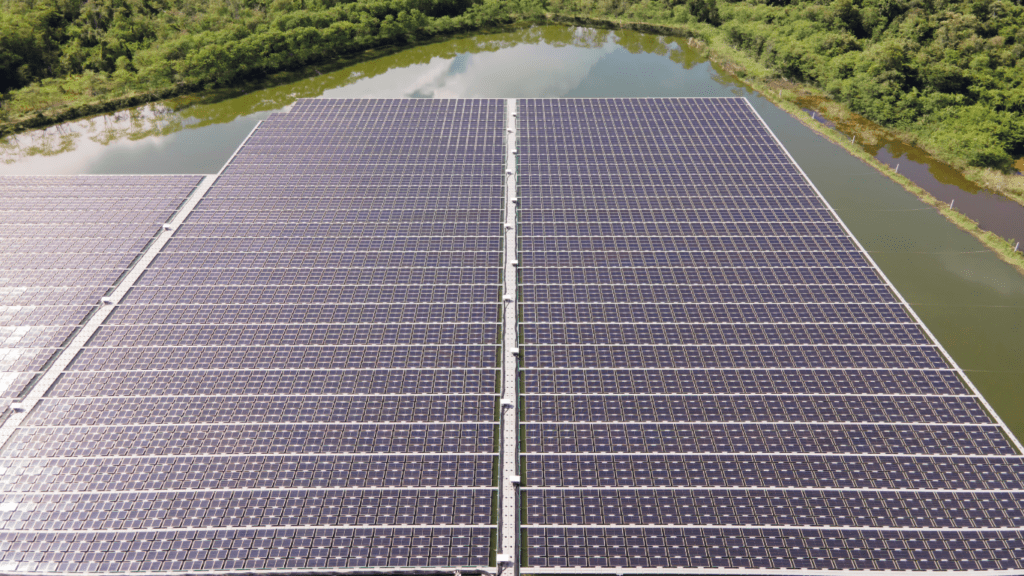Understanding Climate Change
Climate change represents a significant upheaval in Earth’s climatic patterns due to human activities, particularly fossil fuel combustion.
The Current Climate Scenario
Earth’s rising temperatures over the past century reflect alarming climate shifts. Global average temperatures have increased by about 1.2°C (2.2°F) since the late 19th century.
A 2021 IPCC report shows that this warming has unprecedentedly altered weather patterns, leading to more frequent and severe weather events such as:
- hurricanes
- droughts
- wildfires
These phenomena impact food security, water supply, and human health.
Impact of Greenhouse Gases
Greenhouse gases (GHGs), including carbon dioxide (CO₂), methane (CH₄), and nitrous oxide (N₂O), trap heat in the atmosphere, causing global warming.
Human activities like burning fossil fuels, agriculture, and deforestation significantly boost GHG concentrations. According to the EPA, CO₂ levels increased by over 40% since pre-industrial times.
Methane, 25 times more potent than CO₂ in trapping heat, has more than doubled. These elevated GHG levels amplify the natural greenhouse effect, driving climate change.
The Importance of Renewable Energy
Renewable energy plays a crucial role in combating climate change by reducing the dependence on fossil fuels and mitigating greenhouse gas emissions. It’s vital for creating a sustainable and stable energy future.
Types of Renewable Energy Sources
Several renewable energy sources contribute to reducing global warming.
- Solar energy, derived from the sun, provides a potent and endless supply of power.
- Wind energy harnesses air currents to generate electricity efficiently.
- Hydropower, utilizing the flow of water, offers a reliable and consistent energy source.
- Geothermal energy, tapping into Earth’s internal heat, provides a steady power supply.
- Biomass energy, converting organic materials into fuel, contributes to waste reduction and sustainable energy production.
Benefits of Switching to Renewable Energy
Switching to renewable energy offers multiple benefits for the environment and society. Reducing greenhouse gas emissions curbs global warming and slows climate change.
Decreasing air and water pollution improves public health by reducing respiratory and cardiovascular diseases. Renewable energy sources are abundant and inexhaustible, ensuring energy security and reducing dependence on imported fuels.
Creating job opportunities in the renewable energy sector stimulates economic growth and innovation. Lowering energy costs in the long term benefits consumers and promotes energy affordability.
Advancements in Renewable Energy Technology

Renewable energy technology has seen significant advancements, enhancing efficiency and reducing costs. These technological strides play a crucial role in fighting climate change.
Innovations in Solar Energy
Solar energy has benefitted from technological innovations like improved photovoltaic (PV) cells. These cells now have higher efficiency rates, with some achieving over 22% efficiency.
Another innovation is solar tracking systems, which adjust panels to follow the sun, maximizing energy capture. Organic PV cells, a newer development, offer flexibility and lower production costs.
Additionally, solar storage solutions, such as lithium-ion batteries, provide dependable energy even when the sun isn’t shining.
Progress in Wind Energy
Wind energy technology also sees impressive advancements. Turbine designs now include larger blades made from lightweight materials, boosting energy output.
Offshore wind farms, benefiting from stronger and more consistent winds, have become more prevalent. Floating wind turbines allow installation in deeper waters, expanding potential locations.
Furthermore, enhanced predictive maintenance using AI reduces downtime and extends turbine lifespan.
Renewable Energy Policies and Regulations
Policies and regulations play a key role in promoting renewable energy. Without a supportive framework, widespread adoption remains challenging.
Global Renewable Energy Initiatives
Several international agreements focus on renewable energy. The Paris Agreement is paramount, aiming to limit global temperature rise to below 2 degrees Celsius above pre-industrial levels. Countries commit to reducing greenhouse gas emissions, often through renewable energy targets.
The International Renewable Energy Agency (IRENA) promotes global cooperation. IRENA provides data, advice, and support to accelerate renewable energy adoption worldwide. Initiatives like these help countries develop sustainable energy policies.
National Policies Supporting Renewables
Countries implement varied policies to encourage renewable energy. The US provides tax incentives and subsidies for renewable energy projects. The Investment Tax Credit (ITC) and Production Tax Credit (PTC) are notable programs boosting solar and wind energy development.
Germany’s Renewable Energy Sources Act (EEG) transformed its energy landscape. Feed-in tariffs guarantee renewable energy producers a fixed return, encouraging investment.
China leads renewable energy production, driven by strong government policies. Subsidies, low-interest loans, and mandatory renewable energy quotas for power producers fuel growth.
Incentives, regulatory frameworks, and international cooperation are essential to expand renewable energy globally and combat climate change effectively.
Economic Implications of Renewable Energy
Renewable energy not only combats climate change but also has significant economic benefits. These benefits span cost comparisons and job creation, highlighting the financial advantages of transitioning to renewables.
Cost Comparison with Fossil Fuels
The cost of renewable energy has decreased significantly over the past decade. Solar and wind power, for example, have become some of the cheapest sources of electricity.
A report by the International Renewable Energy Agency (IRENA) shows that the global weighted-average levelized cost of electricity (LCOE) from solar PV declined by 82% between 2010 and 2019. Similarly, the cost of onshore wind dropped by 40% during the same period.
In contrast, fossil fuels like coal and natural gas face increasing costs due to carbon pricing and stringent environmental regulations.
According to the International Energy Agency (IEA), new coal plants have higher levelized costs compared to new renewable plants. Additionally, the volatility of fossil fuel prices due to geopolitical tensions further adds to their economic unpredictability.
Job Creation in the Renewable Sector
Renewable energy also drives job creation, offering significant employment opportunities. As of 2020, the renewable energy sector employed 12 million people worldwide, according to IRENA.
Solar PV created the most jobs, with over 4 million positions globally. Wind energy followed, employing around 1.3 million people.
In the US, the renewable energy sector employed over 3 million people in 2019, as reported by the E2’s Clean Jobs America report. This includes roles in manufacturing, installation, and maintenance of renewable energy facilities.
In comparison, the coal industry employed around 50,000 workers, highlighting the significant disparity in job creation potential between the two sectors.
Transitioning to renewable energy not only reduces greenhouse gas emissions but also offers substantial economic gains, positioning it as a crucial component in our fight against climate change.
 Ruby Miller - Eco Specialist & Contributor at Green Commerce Haven
Ruby Miller is an enthusiastic advocate for sustainability and a key contributor to Green Commerce Haven. With a background in environmental science and a passion for green entrepreneurship, Ruby brings a wealth of knowledge to the platform. Her work focuses on researching and writing about eco-friendly startups, organic products, and innovative green marketing strategies. Ruby's insights help businesses navigate the evolving landscape of sustainable commerce, while her dedication to promoting eco-conscious living inspires readers to make environmentally responsible choices.
Ruby Miller - Eco Specialist & Contributor at Green Commerce Haven
Ruby Miller is an enthusiastic advocate for sustainability and a key contributor to Green Commerce Haven. With a background in environmental science and a passion for green entrepreneurship, Ruby brings a wealth of knowledge to the platform. Her work focuses on researching and writing about eco-friendly startups, organic products, and innovative green marketing strategies. Ruby's insights help businesses navigate the evolving landscape of sustainable commerce, while her dedication to promoting eco-conscious living inspires readers to make environmentally responsible choices.
